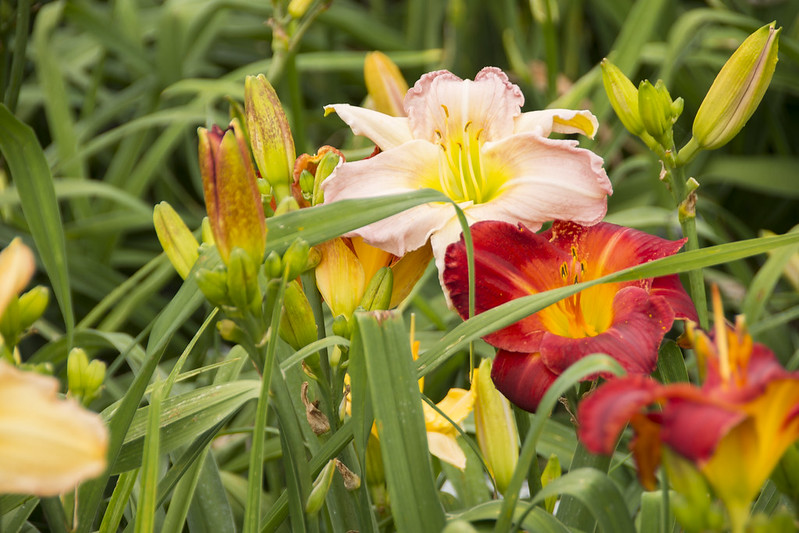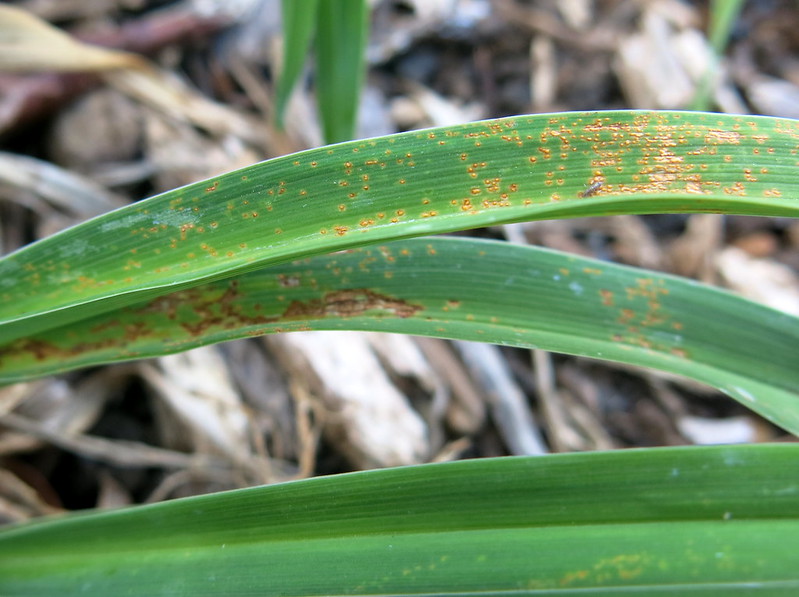Daylilies or Hemerocallis are summer-blooming perennials. These plants feature lush, fountain-like foliage and boldly colored, often dramatic blooms that usually last for a single day. Daylilies are easy to grow, and once these plants are acclimated, they require very little attention, making them a wonderful plant for large landscapes or gardeners looking for a limited time commitment. While daylily plants are easy to grow, some diseases can infect the plants and cause problems. Learn more about diseases that may affect the plant's health and how to identify and treat common problems.

Daylily Leaf Streak
A fungal infection causes daylily leaf streaks. Crowded, damp conditions are more conducive to fungal infections like leaf streaks. Plants can become infected at any time, but damaged foliage is more likely to appear during summer's hot and humid days. Leaf streak can damage and kill vegetation and eventually kill the plant in severe cases.
Identifying Leaf Streak
Daylily leaf streak appears as discoloration along the middle of the foliage, along the midrib. Long yellow stripes run along the center of the leaf before turning brown and dying. The streaks typically start near the tip of the foliage and progress toward the base.
Treating Leaf Streak
Water around the base of the plants and avoid overhead watering to reduce the risk of daylily leaf streaks. Fungicides can also help eliminate this infection. Treat leaf streak by removing infected foliage as it appears. Remove all the growth at the end of the growing season to prevent the fungus from surviving through the winter. Destroy the vegetation to avoid future outbreaks.
Daylily Rust
Daylily rust is the result of a fungal pathogen. Moist conditions are more hospitable to the fungus, and rust often appears in crowded, damp growing conditions. Daylily rust can kill foliage, and a heavily infected plant can die if enough leaves are compromised.
Identifying Daylily Rust
Rust appears as yellow or brown lines that run the length of the leaves, accompanied by small yellow dots. Orange pustules later develop near the base of the leaves. Infected foliage will completely turn brown and die with time.

Photo by Scot Nelson
Treating Daylily Rust
Treat daylily rust by removing debris and dead plant growth to increase airflow. Give plants enough space during planting, or divide daylilies growing in close quarters. Prune severely infected leaves to prevent the spread of this pathogen. Trim infected leaves as close to the base of the plant as possible to remove all of the spores.
Daylily Soft Rot
Daylily soft rot is a bacterial infection that can kill the plant by rotting the rhizomes. Soft rot occurs when the bacteria Pectobacterium carotovorum is present in the soil. Increased temperatures, poor drainage, and low airflow contribute to soft rot. Excessive fertilization can also worsen the issue. Daylily soft rot can ultimately kill the plant.
Identifying Soft Rot
Soft rot first impacts the crown of the plant. An unpleasant odor is often the first sign, followed by dying and decaying foliage, starting at the center and overtaking the entire plant.
Treating Soft Rot
Prevent daylily soft rot by planting in well-draining soil. Space plants adequately during planting or thin established plants to improve air circulation. Also, improve airflow by removing dead plant matter and debris. Keep the foliage as dry as possible by watering the ground around the plant instead of watering from above.
Daylily Disease Chart
|
Disease |
Identifying |
Treating |
|
Daylily Leaf Streak |
Leaf discoloration, dying foliage |
Prune/discard foliage |
|
Daylily Rust |
Leaf discoloration, dying foliage |
Prune/discard foliage |
|
Daylily Soft Rot |
Unpleasant odor, dying foliage |
Improve air circulation |
Sources:
"Daylily Diseases & Insect Pests." Clemson University Cooperative Extension Service. hgic.clemson.edu
"Hemerocallis (Daylily) Diseases." PennState Extension. extension.psu.edu
 |
Author Alison Cotsonas - Published 08-04-2023 |
